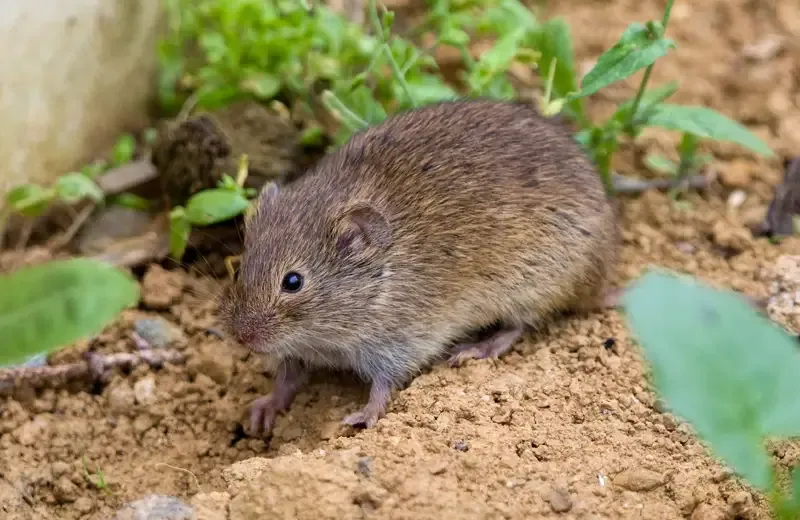Specialist Approaches for Vole Control and Avoidance
Mastering Vole Parasite Control: Thorough Insights on Invasion Avoidance and Therapy Strategies
By acknowledging the subtle indicators of vole invasion early on, we can take proactive actions to stop widespread damages. In this discussion, we will certainly check out the nuances of vole actions, dig right into the recognition of infestation indications, and discover the most efficient prevention and treatment approaches.
Recognizing Vole Habits
Analyzing the foraging patterns of voles supplies useful understandings into their behavior and environment preferences. Voles, little rats looking like computer mice, are herbivores known for their below ground tunneling activities. By observing their foraging habits, scientists can acquire a better understanding of where voles like to develop their habitats and the degree of their ecological impact. Voles are respected dog breeders, with a single women qualified of creating numerous litters in a year, making it crucial to comprehend their habits for reliable pest control methods.
Research indicates that voles exhibit careful feeding routines, favoring roots, origins, and seeds. This nutritional preference influences their foraging patterns, leading them to locations rich in greenery and ground cover. In addition, voles are known to produce fancy tunnel systems for foraging and nesting functions, showing a high degree of flexibility to their environments.
Understanding vole behavior is vital for executing targeted insect control measures that interrupt their environment preferences and foraging tasks (vole control utah). By researching their habits, experts can develop extra efficient prevention and therapy methods to handle vole infestations

Identifying Signs of Vole Problem
Vole invasions can be discovered by recognizing details signs of their presence in a location. One of one of the most usual indicators of a vole problem is the visibility of surface paths. Voles produce networks of slim paths on the ground that are generally around two inches wide. These paths are typically located in verdant locations or under compost or ground cover where voles can move easily and search for food.
Another crucial indication of vole infestation is the existence of tiny burrow openings in the ground. Additionally, voles are known to leave behind chewed plant stems, origins, and light bulbs near their burrow openings, indicating their feeding activity in the location.
In addition, vole droppings can also represent their existence. Vole droppings are tiny, brownish, and round fit, looking like grains of rice. Locating these droppings along paths or near burrow openings can confirm a vole infestation. By being attentive for these indicators, homeowner can promptly address vole infestations and avoid additional damages.
Executing Positive Prevention Steps

In addition, utilizing all-natural vole deterrents like castor oil-based repellents or killer urine can work as effective safety nets. It is additionally advisable to consistently examine exterior spaces for any kind of signs of vole activity, such as paths or burrow openings, to deal with possible infestations immediately. vole yard damage. By adopting these positive avoidance approaches, home proprietors can significantly decrease the probability of vole damages and maintain the health and appearances of their landscapes
Effective Treatment Techniques
Integrating targeted capturing approaches and making use of accepted rodenticides are important components of efficient click this site therapy approaches for managing vole infestations. Trapping can be an efficient way to reduce vole populations, especially when placed strategically in their active runways. Snap traps and live traps can both work, with the latter enabling the capture and relocation of voles. When making use of rodenticides, it is crucial to follow safety standards to avoid injury to non-target pets and pet dogs. Area rodenticides in secure bait terminals to decrease dangers to unexpected targets. Furthermore, habitat modification, such as reducing ground cover and removing resources of food, can assist discourage voles from infesting an area. Normal surveillance and upkeep are also key aspects of effective treatment strategies to ensure that vole populaces are kept under control. By combining capturing, rodenticides, habitat modification, and regular tracking, efficient vole parasite control can be achieved.
Monitoring and Maintenance Tips
Normal monitoring permits for the very early detection of vole activity, enabling prompt intervention before invasions get worse. To effectively keep track of vole populations, tactically put traps can be used in vole paths or near burrow entries.
In addition, keeping a tidy and well-kept landscape is essential in vole prevention. Clearing up away debris, such as stacks of wood or dense greenery, eliminates potential vole habitats. Frequently cutting yards and trimming plant life helps in reducing vole concealing spots and minimizes their this post access to food resources.
Moreover, continuous maintenance of physical barriers, such as fencings or cable mesh, is important to avoid vole invasion. Checking and repairing any problems to these structures guarantees that vole control remains reliable in securing properties from problems. By integrating these monitoring and upkeep methods into a thorough vole bug control plan, people can successfully handle vole populaces and secure their homes from damage.
Final Thought
Finally, understanding vole insect control calls for a solid understanding of vole actions, the capability to recognize indications of infestation, applying positive avoidance procedures, effective therapy strategies, and constant monitoring and maintenance. By taking a comprehensive technique to vole control, individuals can successfully manage and protect against infestations, ultimately protecting their property and surrounding setting from damage triggered by these tiny rodents.
In this discussion, we will certainly go to these guys discover the nuances of vole habits, dive into the recognition of problem signs, and reveal the most reliable prevention and treatment techniques.Including targeted trapping methods and using accepted rodenticides are essential elements of efficient therapy techniques for taking care of vole problems. To effectively keep track of vole populaces, tactically positioned catches can be made use of in vole paths or near burrow entrances. Examining and repairing any type of damages to these structures makes sure that vole control remains effective in protecting properties from infestations. By incorporating these monitoring and maintenance techniques into a comprehensive vole pest control plan, people can properly take care of vole populaces and shield their residential properties from damage.